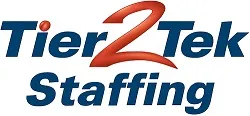UI UX Interview Questions with Answers

In the field of UI/UX design, UI/UX Interview Questions are crucial for both hiring managers and job seekers to stay updated on current practices and expectations. These questions cover essential topics from basic principles to complex scenarios, helping hiring managers assess candidates effectively and job seekers prepare thoroughly for their interviews.
Understanding UI and UX Design: Key Concepts and Best Practices
What is the difference between UI and UX design?
UI design focuses on the visual elements that users interact with, such as buttons and icons. In contrast, UX design deals with the overall feel and experience of the user journey.
Can you explain the importance of user personas in UX design?
User personas are fictional characters based on research about your target audience. They help designers understand user needs, behaviors, and goals, leading to more effective design solutions.
What is a wireframe, and how do you typically use it?
A wireframe is a low-fidelity layout that outlines the basic structure of a webpage or app. It helps organize content and functionality before adding visual elements.
Describe a scenario where you improved user experience.
Improving user experience could involve simplifying website navigation to reduce user drop-off rates, demonstrating an understanding of user behavior and enhancing their experience.
What tools do you use for UI/UX design, and why?
Common tools include Sketch, Adobe XD, and Figma, which support various design stages from wireframing to prototyping and offer collaboration features.
How do you handle negative feedback on your UI/UX designs?
Handle feedback constructively by viewing it as an opportunity for improvement. Ask clarifying questions and use the feedback to make informed design decisions.
What is the difference between a prototype and a wireframe?
A prototype is an interactive model simulating the user interface and experience, while a wireframe is a static outline focusing on layout and content.
How do you ensure your design is accessible to all users?
Adhere to accessibility standards like WCAG, use sufficient contrast ratios, ensure keyboard navigation, and include alt text for images.
Explain the term ‘responsive design’.
Responsive design ensures that web content adapts to different devices and screen sizes, maintaining usability and functionality across all devices.
What is the significance of user testing in UX design?
User testing validates assumptions, provides insights into user behavior, and offers real feedback to refine the product and meet user needs effectively.
How do you prioritize usability in your designs?
Focus on simplicity and intuitiveness in navigation, ensuring users can achieve their goals with minimal confusion or distraction.
Describe how you would conduct a usability test.
Conduct a usability test by setting clear objectives, selecting participants, preparing scenarios, observing the test, and analyzing results to make improvements.
What is information architecture in UX design?
Information architecture is the organization of information in a digital product, helping users find information and complete tasks efficiently.
How do you deal with constraints like tight budgets or short timelines in your design process?
Address constraints by prioritizing key functionalities, using rapid prototyping tools, and conducting agile sprints to maximize efficiency and focus on value.
Explain how consistency impacts UX design.
Consistency improves usability and learnability by making interfaces predictable, using the same visual and functional elements across similar contexts.
What is the role of color in UI design?
Color enhances visual hierarchy, conveys meanings, and elicits emotions, playing a crucial role in usability by distinguishing elements like buttons and alerts.
How do you stay updated with the latest UI/UX trends and technologies?
Stay updated by following industry leaders on social media, subscribing to relevant blogs, and attending workshops and seminars.
Can you explain the concept of ‘minimalism’ in UX design?
Minimalism simplifies interfaces by removing unnecessary elements, focusing on core content and functionality to support user tasks effectively.
What are some common UI/UX design mistakes?
Common mistakes include ignoring mobile users, overloading with information, neglecting load times, and failing to scale elements for different devices.
How do you measure the success of your UI/UX designs?
Measure success through user satisfaction surveys, usability tests, and analyzing user interaction data to determine how effectively users achieve their goals.
Describe a project where you used data to inform your design decisions.
For example, using analytics to identify user drop-off points in an app and making design changes to improve user flow and retention.
What is ‘user flow’ in UX design?
User flow is the path a user follows through an application or website, from the entry point to the final interaction, like making a purchase or subscribing.
How do you balance innovation with usability in your designs?
Balance innovation with usability by introducing new concepts gradually, testing extensively, and ensuring that new features enhance rather than complicate the user experience.
What is the role of typography in UI design?
Typography affects readability, accessibility, and the overall aesthetic. Choose fonts that are legible and appropriate for the target audience.
How do you handle scope creep in UX projects?
Manage scope creep by clearly defining requirements, maintaining regular communication with stakeholders, and being flexible yet firm about project boundaries.
Describe how you approach redesigning an existing product.
Approach redesigns by auditing the existing product, gathering user feedback, identifying pain points, and applying design thinking to address issues and improve the experience.
What are design tokens, and why are they important in UI/UX design?
Design tokens are visual design elements like color and spacing used for consistency across platforms.
How do you ensure that your designs are both attractive and functional?
Balance aesthetics with functionality by focusing on user needs first, ensuring usability, and then enhancing the design with visually appealing elements.
Can you discuss the impact of mobile-first design?
Mobile-first design prioritizes mobile devices, ensuring usability and functionality on smaller screens before scaling up to desktops.
Common Technologies Used in UI/UX Design

UI UX design leverages a variety of technologies to create engaging and effective interfaces. Here are some of the most commonly used ones:
- Sketch: A vector-based design tool specifically focused on user interface design. It’s widely used for creating wireframes, prototypes, and high-fidelity designs.
- Adobe XD: Part of Adobe’s Creative Cloud, XD allows designers to wireframe, animate, prototype, collaborate, and more, all within a single application.
- Figma: A cloud-based design tool that is similar to Sketch but with added real-time collaboration features. It’s used for everything from wireframing to creating fully interactive prototypes.
- InVision: A digital product design platform that provides tools for prototyping, collaborating, and workflow management.
- Axure RP: A tool for creating more complex prototypes with dynamic content, conditional logic, and calculations without coding.
- Balsamiq: A rapid wireframing tool that helps designers work faster & smarter. It reproduces the experience of sketching on a whiteboard but using a computer.
- Marvel: An all-in-one platform starting from wireframing to prototype and even user testing, known for its ease of use.
- UXPin: Offers advanced prototyping with code components, logic, states, and design systems.
- Zeplin: Facilitates handoff by connecting designers and developers in the workspace, allowing for asset, style, and code output.
- Framer: For interactive and animated prototypes, this tool is highly favored for its integration capabilities with React.
Key Expertise Areas in UI UX Design
UI/UX design requires a broad set of skills and expertise to effectively address user needs and craft intuitive interfaces. Here are some critical areas of expertise:
- User Research: Understanding user behaviors, needs, and motivations through observation techniques, task analysis, and other feedback methodologies.
- Information Architecture (IA): Structuring and organizing information to help users find information and complete tasks more efficiently.
- Wireframing and Prototyping: Developing wireframes that layout content and functionality on a page considering user needs and journey flows. Prototyping to test and refine interactions.
- Visual Design: Applying visual design principles to create aesthetically pleasing and functional interfaces, including the use of color, typography, and layout.
- Interaction Design: Designing interactive elements such that they offer intuitive usability. Focuses on creating engaging interfaces with logical flow and behavior.
- Usability Testing: Gathering feedback from users about the ease of use and satisfaction with a product, often through observing users as they attempt to complete tasks.
- Accessibility: Ensuring that digital products are accessible to people with a wide range of physical and cognitive abilities, adhering to guidelines such as WCAG.
- Responsive and Mobile Design: Ensuring websites and applications are usable on a variety of devices, including adapting to different screen sizes and orientations.
- User Interface Engineering: Implementing the technical front-end development of a design, ensuring that it works across various browsers and devices.
- Design Systems and Standards: Developing and maintaining design standards and systems to ensure consistency and efficiency in design across an organization.
Need to Hire UI UX Designers?

At Tier2Tek Staffing, we specialize in sourcing top-tier UI UX design professionals who can elevate your digital projects. Our dedicated team understands the critical impact of exceptional design on user experience.
- Sourcing Speed: We quickly connect you with skilled UI/UX designers, minimizing downtime and accelerating your project timelines.
- Communication with Clients: Our team maintains open and continuous communication to ensure your needs are perfectly matched with the right talent.
- Quality Candidates: We deliver vetted, top-quality UI/UX candidates, ensuring that they meet your specific project requirements.
- Innovative Sourcing Strategies: Leveraging the latest in recruitment technology and methods, we find and attract standout talent in UI/UX design.
